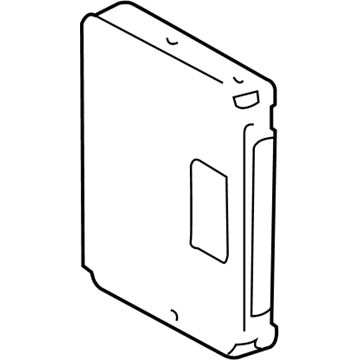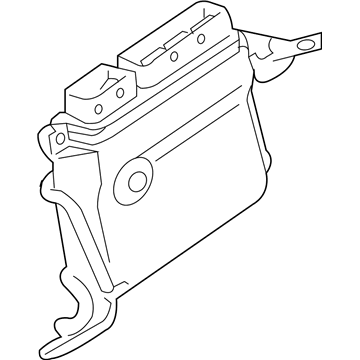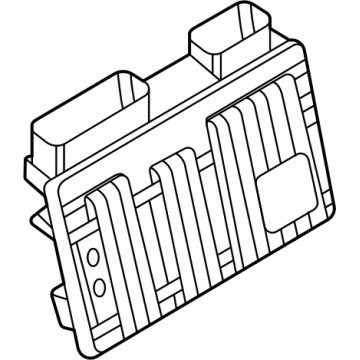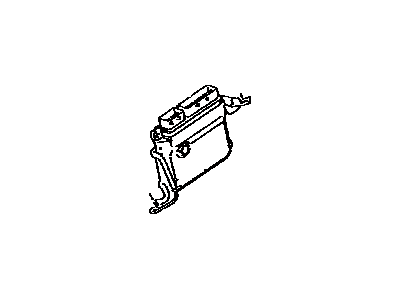×
ToyotaParts- Hello
- Login or Register
- Quick Links
- Live Chat
- Track Order
- Parts Availability
- RMA
- Help Center
- Contact Us
- Shop for
- Toyota Parts
- Scion Parts
My Garage
My Account
Cart
OEM Toyota Prius Engine Control Module
Engine Control Computer- Select Vehicle by Model
- Select Vehicle by VIN
Select Vehicle by Model
orMake
Model
Year
Select Vehicle by VIN
For the most accurate results, select vehicle by your VIN (Vehicle Identification Number).
18 Engine Control Modules found
Toyota Prius ECM
Part Number: 89661-47D21$624.35 MSRP: $915.00You Save: $290.65 (32%)Ships in 1-3 Business DaysToyota Prius ECM
Part Number: 89661-47C30$566.24 MSRP: $829.83You Save: $263.59 (32%)Ships in 1-3 Business DaysToyota Prius ECM
Part Number: 89661-47162$614.14 MSRP: $900.03You Save: $285.89 (32%)Ships in 1-3 Business DaysToyota Prius ECM
Part Number: 89661-47104$645.80 MSRP: $946.44You Save: $300.64 (32%)Ships in 1-3 Business DaysToyota Prius ECM
Part Number: 89660-47514$738.19 MSRP: $1081.83You Save: $343.64 (32%)Ships in 1-3 Business DaysToyota Prius ECM
Part Number: 89660-47435$733.88 MSRP: $1075.51You Save: $341.63 (32%)Ships in 1-3 Business DaysToyota Prius ECM
Part Number: 89660-47306$734.79 MSRP: $1076.84You Save: $342.05 (32%)Ships in 1-3 Business DaysToyota Prius ECM
Part Number: 89661-47E40$617.54 MSRP: $905.01You Save: $287.47 (32%)Ships in 1-2 Business DaysToyota Prius ECM
Part Number: 89661-47C80$584.17 MSRP: $856.11You Save: $271.94 (32%)Ships in 1-3 Business DaysToyota Prius ECM
Part Number: 89661-47C40$567.03 MSRP: $830.99You Save: $263.96 (32%)Ships in 1-3 Business DaysToyota Prius ECM
Part Number: 89661-47A10$561.70 MSRP: $823.18You Save: $261.48 (32%)Ships in 1-3 Business DaysToyota Prius ECM
Part Number: 89661-47A00$596.64 MSRP: $874.38You Save: $277.74 (32%)Ships in 1-3 Business DaysToyota Prius ECM
Part Number: 89661-47653$588.94 MSRP: $863.09You Save: $274.15 (32%)Ships in 1-3 Business DaysToyota Prius ECM
Part Number: 89661-47643$669.87 MSRP: $981.69You Save: $311.82 (32%)Ships in 1-3 Business DaysToyota Prius ECM
Part Number: 89661-47250$594.96 MSRP: $871.92You Save: $276.96 (32%)Ships in 1-3 Business DaysToyota Prius ECM
Part Number: 89661-47054$1124.21 MSRP: $1647.54You Save: $523.33 (32%)Ships in 1-3 Business DaysToyota Prius ECM
Part Number: 89660-47751$626.17 MSRP: $917.66You Save: $291.49 (32%)Ships in 1-3 Business DaysToyota Prius ECM
Part Number: 89660-47550$452.56 MSRP: $663.23You Save: $210.67 (32%)Ships in 1-3 Business Days
Toyota Prius Engine Control Module
Choose genuine Engine Control Module that pass strict quality control tests. You can trust the top quality and lasting durability. Shopping for OEM Engine Control Module for your Toyota Prius? Our website is your one-stop destination. We stock an extensive selection of genuine Toyota Prius parts. The price is affordable so you can save more. It only takes minutes to browse and find the exact fit. Easily add to cart and check out fast. Our hassle-free return policy will keep you stress-free. We process orders quickly for swift delivery. Your parts will arrive faster, so you can get back on the road sooner.
Toyota Prius Engine Control Module Parts and Q&A
- Q: How to remove and replace the Engine Control Module (ECM) on Toyota Prius?A:First users should disconnect the cable from the negative battery terminal to deactivate Air Bag and seat belt pretensioners before proceeding with ECM removal or replacement. The next step should be removal of the instrument panel sub-assembly then extraction of the No. 3 heater to register duct. Disconnect the 4 ECM connectors and the 4 hybrid vehicle control ECU connectors and then remove the 2 nuts and bolt securing the ECM with bracket followed by the 2 nuts and the 3 No.1 and 6 screw ECM brackets before installing the 4 screws and 2 No.2 and 2 No.3 ECM brackets. Begin installation by placing the No. 3 ECM bracket with 2 screws while installing the 2 No. 2 ECM brackets with 4 screws followed by the 3 No. 1 ECM brackets with 6 screws. Use the 2 nuts to install the ECM after setting the torque to 3.0 N.m (31 kgf.cm, 27 in.lbf) and then apply the 2 nuts and bolt to secure the ECM with bracket with the same torque value. Reinstall the No. 3 heater to register duct and the instrument panel sub-assembly after connecting all 4 hybrid vehicle control ECU connectors and 4 ECM connectors. You need to complete initialization by reapplying the cable to the negative battery terminal point because the systems demand this step following battery cable detachment.
- Q: How to install the Engine Control Module on Toyota Prius?A:The installation starts with mounting 2 screws into the No. 3 ECM bracket followed by attaching 4 screws to 2 No. 2 ECM brackets and completing the process with 6 screws securing 3 No. 1 ECM brackets. After installing 2 nuts properly torque them to 3.0 Nm (31 kgf-cm, 27 in-lbf) then fasten the ECM using 2 nuts along with a bolt which requires the same torque value. Secure both 4 hybrid vehicle control ECU connectors and 4 ECM connectors. Follow by installing the No. 3 heater to register duct while further installing the instrument panel sub-assembly with correct installation of the instrument panel safety pad. After connecting the cable to the negative battery terminal it is necessary to initiate new system operation if the product guidelines mention negative terminal cable reconnection needs initialization steps.
























